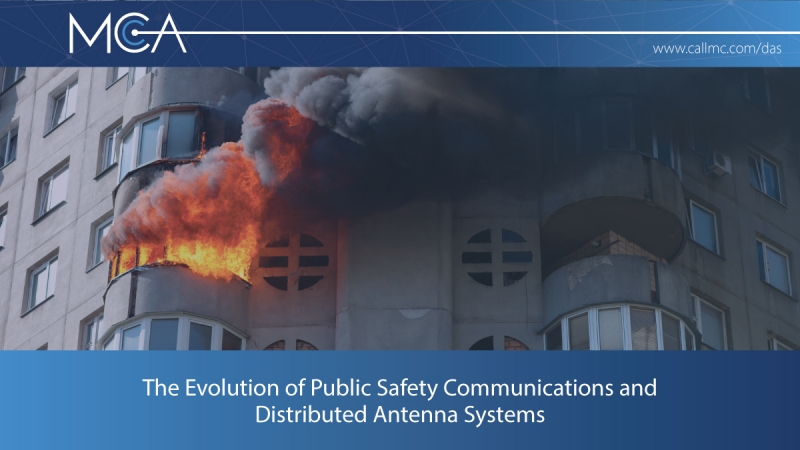
How Public Safety Communications and Distributed Antenna Systems Have Evolved Since 9/11
On 9/11, many first responders couldn't communicate on the publicly available networks because the networks were too congested or the infrastructure that housed them had been damaged.
After 9/11, public safety agencies joined forces to lobby Congress to make sure first responders will be able to communicate during emergencies. The result was $7 billion in funding to create the National Public Safety Broadband Network (NPSBN), build out and deploy the infrastructure nationwide, and reserve 20 MHz of radio spectrum specifically for first responders.
A Public Safety Communications Network is About More Than Having Cell Coverage
Public safety systems and cellular services aren't the same. Public safety systems must meet strict compliance requirements like the International Fire Code and the National Electrical Manufacturers Association.
Plus, coverage for a public safety communications network needs to be more than just available. When designing a property, a developer might consider inhabitant convenience. Developers might make sure that cell connectivity is available in most of the common spaces, such as the lobby, hallways, and parking lots. But for the system to be a public safety system, the coverage needs to be everywhere that someone might be during an emergency: even less frequently used spaces such as closets, vaults and storerooms, elevators and stairwells, rooftops, and at all points of ingress and egress.
And a dedicated network for first responders to access during emergencies involves more than making sure there's enough radio and cell coverage inside a building. Too often, commercial systems providers try to pass off thrown-together components that don't truly make up a public safety communications network. While the components might do the job, they're not properly configured to ensure there are correct amounts of coverage or backup if there's an emergency.
What Makes Up a Public Safety Communications Network
Distributed Antenna System
A true public safety communications network starts with a distributed antenna system (DAS), a network of antennas that amplify signal strength throughout a building. A single network signal often can't cover a large building and extend through the far reaches of the building. A DAS can work on both radio networks and 4G/LTE networks and connect to various vital components, including Bi-Directional Amplifiers (BDA) and HEU Control Units.
Other Necessary Components of a Public Safety Communications Network
While a DAS is a vital component of a public safety communications network, other components must also be present to ensure there's enough backup and coverage for first responders to communicate during an emergency:
- Radios
- Defining how long components, like conduits and risers, must be able to survive a fire
- Battery backup
- Monitoring systems that will trigger alarms and alerts if a component of the system is defective
What Causes Public Safety Communications Networks to Fail?
So, if public safety communications networks include sophisticated technology like DAS's and monitoring systems that trigger alarms and alerts if a single component is defective, what causes them to fail? There are three main reasons.
Network Tower Location
The location of towers is also probably the reason for any cellular communications failures that most people are familiar with. The further a device is from the tower, the weaker the signal. If an emergency occurs in an area that already has low signal, the arrival of first responders and influx of devices on the network will only diminish the signal more.
Building Materials
Concrete and steel make buildings stronger and sturdier, but they also make their walls thicker and denser. That inhibits the signals' ability to penetrate them.
Plus, buildings built to meet LEED certification requirements use materials that are often coated with substances that make buildings more energy-efficient. This often blocks or weakens signal strength.
Population Density
The greater the population in an area, the more cell towers there are to provide service to each device. The problem comes when there's a large event or an emergency, and a large number of people and devices converge in a given area. When this happens, first responders are not able to communicate with one another or those who need their help.
Explore This Topic in Greater Depth by Clicking Here >>
About MCA
For over 30 years, MCA has provided expertly tailored communications solutions to property developers and builders in need of two-way radios, job-site connectivity, and wireless signal enhancement systems. Our team provides top-tier support for every aspect of your business and mission-critical communications projects from start to finish. Our engineers assess your needs, design custom solutions, and install systems that fit your organization’s exacting requirements.
